Introduction
The Architosh Professional Workstation Survey study commenced in the fall of 2014, collecting survey data until the end of the year and conducting specific interviews with survey participants. This report is detailed and can be read in various ways. Readers may want to skip to our conclusions on the final page and then work back into the details. The charts and data on page 4 are “comparative” among industries and are most interesting (our favorite part of the report). Use this table of contents as a guide:
- Intro + Survey Results: Key Summary Data
- Gauging the Ideal Mac pro desktop
- Looking at iMac versus Mac Pro for pro desktop workflows
- Looking at Variances in Data by Industry
- Participant Feedback and Architosh Conclusions
The goals of the survey center on understanding how well Apple’s Mac desktop computers (principally the iMac and Mac Pros) meet the needs of pro users in various CAD and 3D industries, from Architecture to Science and Medicine. From our collected data, interviews and research, this study makes five key conclusions.
Advertisement
The following pages walk the reader through the survey data, issues and insights. A page is entirely devoted to sharing survey participant feedback, from both the comment box and from conducted interviews. Further information as to follow-up reports and related future features is provided.
Survey Results: Key Summary Data
Question 1: What professional industry do you work in?
The Architosh run Mac Professional Workstation survey was, not surprisingly, dominated by Architecture professionals, given the demographic at Architosh, which is nearly 50 percent architects. Nearly 65 percent of the more than 315 professionals who took the survey were architects. The next dominant group was 3D/Visualization and Film professionals at slightly over 13 percent. With such a lopsided participant turn-out, and with questionable minimal numbers in some industries, we provide key caveats in the course of the report herein. (see image 01: What professional industry do you work in?)
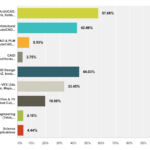
03 – Architosh workstation survey. Question 3. Which types of apps do you currently have on your desktop computer?
Question 2: How many employees are at your organization?
In terms of organizational size, slightly more than 46 percent were 1-2 people sized organizations, meaning there were a lot of single practitioners. The second biggest group was small organizations of 3-19 individuals at just over 32 percent or nearly 1/3 of all survey takers. The remaining 21.16 percent were in organizations from 20-1000+ (see image 02: How many employees are at your organization?)
Question 3: Which types of apps do you currently have on your desktop computer?
The types of applications used roughly reflected the industry field breakdown from image 01 above. BIM applications led the group, followed by CAD and then 3D design applications. We used the term CAID (computer-aided industrial design) and it seems that many readers don’t understand or use that term in their product design field. As a result, it was the lowest catagory despite clear solid turn-out by product and industrial designers.
As a result, CAID industry professionals put their answer for apps into the 3D Design choice, MCAD & PLM choice and CAD choice. In the future we will group CAID with MCAD and PLM. (see image 03: Which types of apps do you currently have on your desktop computer? )
Getting Into Specifics
In this next section we dial in a bit more detail.
Question 4: Do any of your applications utilize GPU (graphics processing unit) hardware acceleration using OpenCL or Nvidia’s CUDA?
Remarkably, nearly 70 percent of participants said their tools benefit from either GPU hardware acceleration. However, in digging into this further, we have realized that many of Apple’s pro customers, perhaps more than one third, do not fully understand what GPU acceleration is via OpenCL or CUDA. (see image 04: Do any of your applications utilize GPU hardware acceleration using OpenCL or Nvidia’s CUDA? )

04 – Architosh workstation survey. Question 4. Do any of your applications utilize GPU hardware acceleration using OpenCL or Nvidia’s CUDA?
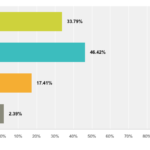
05 – Architosh workstation survey. Question 5. How important are the use of 4K displays to your work?
This especially seems to be the case in its Architecture market, based on our discussions with participants. We will analyze these results in a bit more detail later in the report. (see: Looking at Variances in Data by Industry, pg 3)
Question 5: How important are the use of 4K displays to your work?
As much as Apple talks up 4K and 5K displays, the importance of such displays is a bit low from our survey results. However, this percent would likely be much higher if dedicated film industry professionals took our survey in greater numbers. We did find several 3D professionals had pipelines that somewhat ended with precise 4K display needs. (see image 05: How important are the use of 4K displays to your work? )
Advertisement
Question 6: How many monitors (displays) do you use in your current workflow?
This was one of the most interesting questions and we were stunned with the results. Nearly 60 percent of all participants used two displays or more. Again, if film professionals had participated more in this survey the results would be even higher. For a survey which was dominated by architects, it was quite interesting to see so many participants using two displays. (see image 06: How many monitors (displays) do you use in your current workflow? )
The issue affects hardware makers and in particular the GPU makers, whether Apple integrates GPUs onto motherboards or uses discreet cards. We will dig deep into this issue later in the report.
Question 7: How long do you typically keep your pro hardware (cycle length) before you upgrade?
This is the question and issue that most interest the hardware makers—specifically Apple in this case. But not just Apple. Software vendors too realize that when professionals take on new hardware they often do so as a complete upgrade cycle with software included. Often, the adoption of new hardware drives operating system issues that both warrant and respond to software application upgrades.
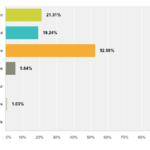
06 – Architosh workstation survey. Question 6. How many monitors (displays) do you use in your current workflow?
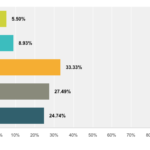
07 – Architosh workstation survey. Question 7. How long do you typically keep your pro hardware before you upgrade?
In looking at the results globally, and being mindful of the strong turn-out by architects taking this survey, we can see that users keep their hardware, on average, longer than 3 years. (see image 07: How long do you keep your pro hardware before you upgrade? )
next page: Gauging the Ideal Mac Pro Desktop


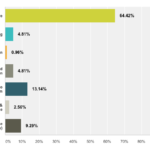



Reader Comments
Architosh publishes Mac professional workstation survey results http://t.co/LleJnjm8NE via @architosh
RT @ArchiCAD: Architosh publishes Mac professional workstation survey results http://t.co/LleJnjm8NE via @architosh
Architosh publishes Mac professional workstation survey results | Architosh http://t.co/DZ4y0m5uFD
Architosh publishes Mac professional workstation survey results | Architosh http://t.co/DZ4y0m5uFD
https://t.co/qMZYlvZh6f
https://t.co/qMZYlvZh6f
Comments are closed.